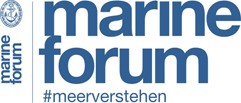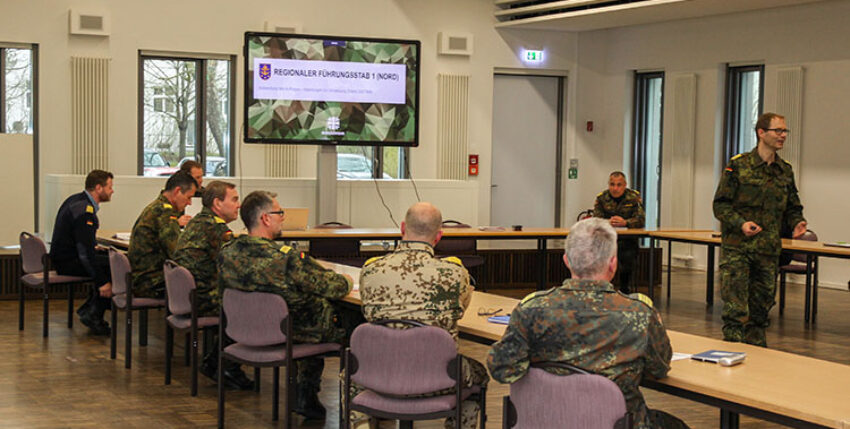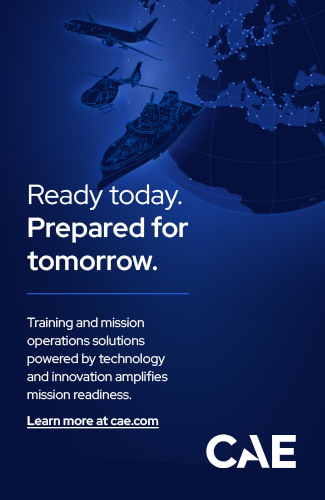When the first reports of the emergence of a new virus in Wuhan, China, appeared in the media at the turn of 2019/2020, hardly anyone could have imagined the drastic changes that the resulting pandemic would bring for society and therefore also for the armed forces. Today, almost a year after the first reports, it is time to draw an interim conclusion and lessons for the future.
Let's get one thing straight from the start: The Navy has so far successfully mastered the challenges posed by the unprecedented events of the pandemic. In addition to the relief, support and protection measures that are often the focus of attention, the deployments, missions, mission-equivalent obligations and continuous deployment tasks have been fulfilled and the necessary (operational) training has been carried out.
Staff relaxation
When the Inspector of the Navy, Vice Admiral Andreas Krause, addressed all naval personnel in his first Corona information letter on 17 March, he noted that the incipient pandemic was increasingly dominating social and political life. Decisions had to be made quickly. Above all, the most urgent task had to be fulfilled, namely to continue prioritised operations, exercises and training. With this in mind, less prioritised projects were scaled back, personnel in the departments were reduced while maintaining operations and the ability to communicate and work remotely was made possible.
The individual measures on site differed greatly between the commands, staffs, land units, schools and the ships and boats during the shipyard laytime, in the home harbour and during sea operations. For example, where workable equipment was already available for mobile use, the obligation to be present was partially cancelled and personnel were sent to work from home. At the same time, the possibility of shift work was created, allowing staff to be swapped on a daily or weekly basis. On board in the shipyard or in the home port, crews were also reduced to the minimum required to maintain operations and rotated on a weekly basis. In some cases, personnel were sent home as part of on-call duty and location-independent working or with the help of leave or overtime reductions. The units at sea remained largely unaffected by these measures.
Operational headquarters
Three coordination elements have been set up at the naval command in Rostock. First and foremost, this ensures round-the-clock availability for all matters relating to Covid-19 for the naval organisation. This includes the medical service perspective as well as the general coordination of instructions and the passing on of information. The support provided by the Bundeswehr as part of administrative assistance in accordance with Article 35 of the Basic Law, which includes tasks such as logistics, disinfection and support for health authorities and test centres, has also been managed centrally since then.
During the rather quiet summer months, when the work processes had become familiarised, the number of personnel in these coordination elements was reduced and routine returned, albeit always against the background of maintaining a pool of personnel that can be reactivated at any time. In the current situation with rising infection figures, this is proving to be very helpful, as support from the Bundeswehr is increasingly being requested in the civilian sector.
Home office as a model for the future?
In order to ensure the ability to communicate and work during the lockdown, suitable and sufficient IT is required. It was soon realised that the number of available devices and connections via VPN tunnels was not sufficient to enable the intended personnel to work remotely. Not inconsiderable performance problems also caused difficulties when dialling into the Bundeswehr network. As a result, the work potential and expertise of the employees not on site could not be fully utilised. At the same time, it became clear time and again how difficult it is to transfer content between personnel who are not permanently connected to the ongoing process. At best, this slowed down service operations, and in some cases information was even lost. The temporary instruction to be able to process openly categorised processes on private IT proved helpful. Almost a year after the start of the pandemic, there is still a backlog in terms of mobile access equipment. Not all staff who could, in principle, carry out their work remotely have the necessary software and hardware. Implementation is simply still too slow here, which prevents a faster response and therefore reduces the room for manoeuvre. Yet it has been shown how effectively jobs can be completed even in the often sceptically viewed home office. At this point, the pandemic has actually offered an opportunity. With the right infrastructure, trust and adapted working behaviour, working from home can also become a success factor for the navy in many areas.

Everyday life in the fleet
Day-to-day operations in the fleet were organised primarily under the motto "Ensure protection against infection while remaining capable of leadership and operational". Personnel were also reduced to the necessary level. Where possible, key personnel in the staffs and squadrons were equipped with mobile IT or a type of shift operation was introduced.
On the seagoing units, mobile equipment was generally only made available to the commanders as information carriers. Where it was hardly possible to maintain the minimum distance, namely on the seagoing units, other practicable solutions were sought. Crews were split, with only one half, the minimum operational crew for harbour or shipyard operations, on board at any one time. The Datteln minehunter proved how, despite the limited space available, self-protection and hygiene measures could be implemented on board and operations maintained even in the early days using converted neckerchiefs.
At sea, the crews faced completely different challenges. The crew of the tender Donau had to do without shore leave for 102 days during their participation in SNMCMG 1, NATO's mine defence unit. However, the fact that a continuous period at sea of 14 days without outside contact or embarkation can replace subsequent isolation in a domestic environment should also be mentioned here as an extremely positive aspect for all those involved - the keyword here is cohort isolation. This meant that the crew of the frigate Baden-Württemberg were able to go ashore in their home port without delay after the warm water trials.
Operations continue
The fleet's operations remained largely unaffected, apart from the comprehensive harbour restrictions for the crews and the associated supply of the units. Particularly at the beginning of the pandemic, the individual regulations were subject to a very high degree of dynamism due to the almost daily changing conditions. An additional complicating factor was that each country had different regulations in place, which had a significant impact on port planning, relocation, resupply and industrial repairs in foreign ports. In this particular case, the navy took very different approaches. For example, one unit was detached from the NATO organisation in the Mediterranean and relocated to the Baltic Sea. The situation was different for the task force provider Berlin - the ship was deployed in the Aegean for almost 170 days. When it left its home port in April 2020, the crew was isolated and prophylactic measures were increased - including social distancing rules, the wearing of masks and the avoidance of outside contact and shore leave. The entire crew was tested both before the transit and before entering the Mediterranean for the first time, so that it could be said with a very high degree of certainty that no one was infected with coronavirus. The cohort isolation that was also carried out later on - only in the harbour on Crete was it possible to walk on the pier without further contact - made it possible to prevent a possible infection with the virus. In order to be able to carry out a test on board, outpatient tests were developed that could be analysed by a specially embarked medical-technical laboratory assistant and additional equipment in the ship's own sea rescue centre. In addition, the personnel on board were accompanied by telemedicine, i.e. by video telephony. With this extensive effort, the Berlin became the first naval vessel in the world to have corona tests carried out at sea. A great success that was recognised far beyond Germany's borders.
Further restrictions initially prevented planned crew changes, such as during the Unifil deployment on the corvette Ludwigshafen Am Rhein, or personnel exchanges at Unifil headquarters in Lebanon were prohibited by the UN and had to be postponed. At the same time, these could only be carried out with highly regulated fortnightly quarantine measures in both Germany and the host country - and vice versa. As is evident from the current operational situation, the Navy must develop solutions for such situations in order to minimise the impact on personnel and their families and to be able to participate in the missions at all.
Lessons Identified
The navy is still in exceptional mode and the pandemic is far from over, which is why its current actions are largely influenced by it. But as an interim conclusion, the navy can say that it has got off lightly so far. Not least due to the strict adherence to measures, the relaxation of personnel, the creation of opportunities for mobile working, the adaptation of training and the nature of service on board. But also, and this should be emphasised here, it is thanks to the disciplined behaviour of the naval personnel themselves that the navy is able to fulfil its core mission and remain capable of acting. All deployments, missions and mission-equivalent obligations can be ensured and the protection of naval personnel from Covid-19 has been guaranteed to date. Frictional losses cannot be avoided in such a complex and unknown situation. Particularly at the beginning of the pandemic, when the situation was developing very dynamically, processes first had to be established and familiarised.
Finally, the question perhaps remains as to whether it would not be necessary to keep prepared plans and instructions "in the drawer". This is certainly a possibility, but it is neither possible, nor realistic to plan, nor necessary to have dedicated plans ready for such a sudden pandemic. However, it is currently clear that the preparations and experience gained in the spring are paying off. Instructions can be implemented much more quickly and resources can be mobilised. Lessons have been learnt from many events, initial conclusions have been drawn and the navy is better prepared for the challenges ahead. Now, however, it is also important not to let up and at the same time to continue to get through the pandemic in the best possible way under the prevailing conditions.
Text: Juliane Lüben
Photo: Bundeswehr/Björn Wilke










